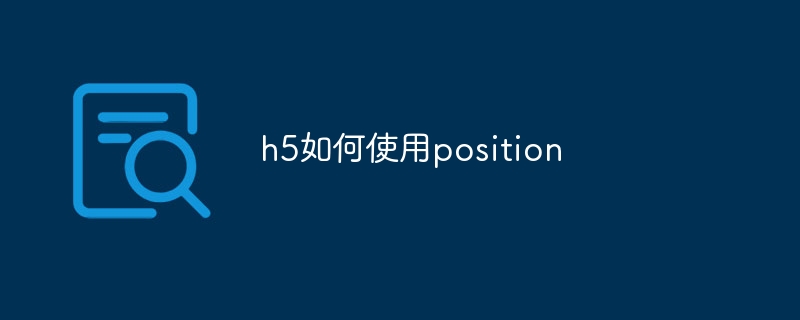Home >Web Front-end >Front-end Q&A >How to use position in h5
How to use position in h5
- 尊渡假赌尊渡假赌尊渡假赌Original
- 2023-12-26 13:39:051070browse
Using the position attribute in H5 can control the positioning method of elements through CSS: 1. Relative positioning relative, the syntax is "style="position: relative;"; 2. Absolute positioning absolute, the syntax is "style ="position: absolute;"; 3. Fixed positioning, the syntax is "style="position: fixed;" and so on.

This tutorial operating system : Windows 10 system, Dell G3 computer.
In H5 (HTML5), you can use the position attribute to control the positioning of elements through CSS. The following are some examples of using position in H5:
- Relative positioning (relative):
<div style="position: relative; top: 10px; left: 20px;"> 这是相对定位的元素 </div>
The div element in the above code will be offset 10 pixels downward and 20 pixels right relative to its normal document flow position.
- Absolute positioning (absolute):
<div style="position: absolute; top: 50px; right: 0;"> 这是绝对定位的元素 </div>
The div element in the above code will be positioned relative to its nearest positioned ancestor element, 50 pixels from the top, 0 pixels from the right edge.
- Fixed positioning (fixed):
<div style="position: fixed; bottom: 0; right: 0;"> 这是固定定位的元素 </div>
The div element in the above code will be positioned relative to the browser window and will always remain At the bottom and right side of the page.
- Sticky positioning (sticky):
<div style="position: sticky; top: 10px;"> 这是粘性定位的元素 </div>
The div element in the above code will span 10 pixels from the top of the user's viewport The relative positioning is maintained before the threshold, and then becomes fixed positioning.
By setting the position attribute and the corresponding positioning attributes (such as top, right, bottom, left), different element positioning effects can be achieved in H5. Remember Place the CSS code inside the style tag or in an external style sheet so that it takes effect throughout the page.
The above is the detailed content of How to use position in h5. For more information, please follow other related articles on the PHP Chinese website!
Related articles
See more- 5 simple and elegant h5 page templates are recommended, welcome to download!
- Introduction to position usage in html
- How to solve the problem that the video tag in H5 cannot play mp4 files
- Customized implementation of H5 player that can play pause, progress drag, volume control and full screen
- How to use css list-style-position attribute

